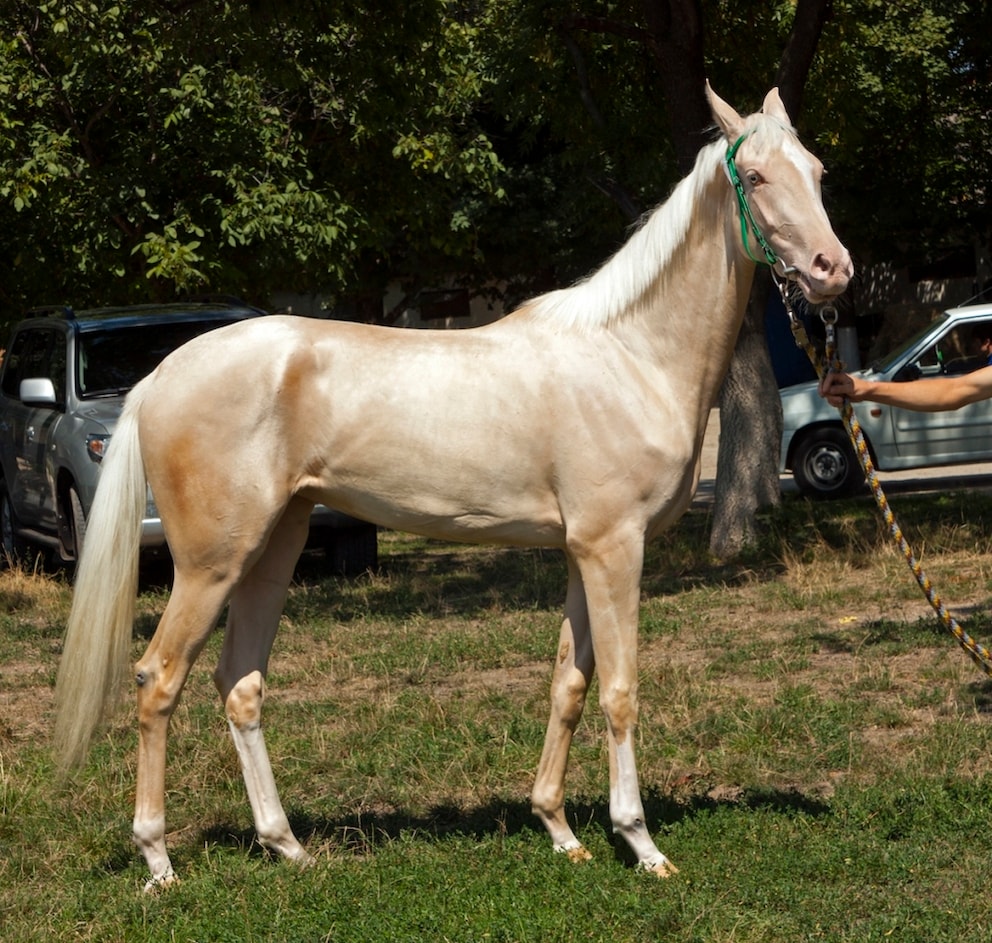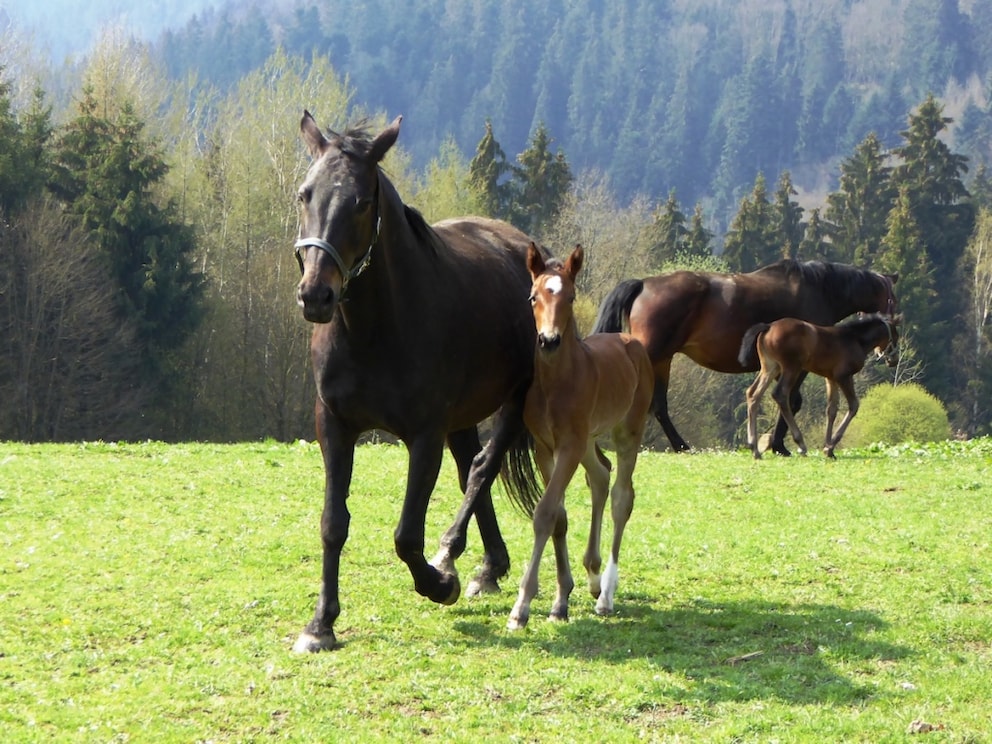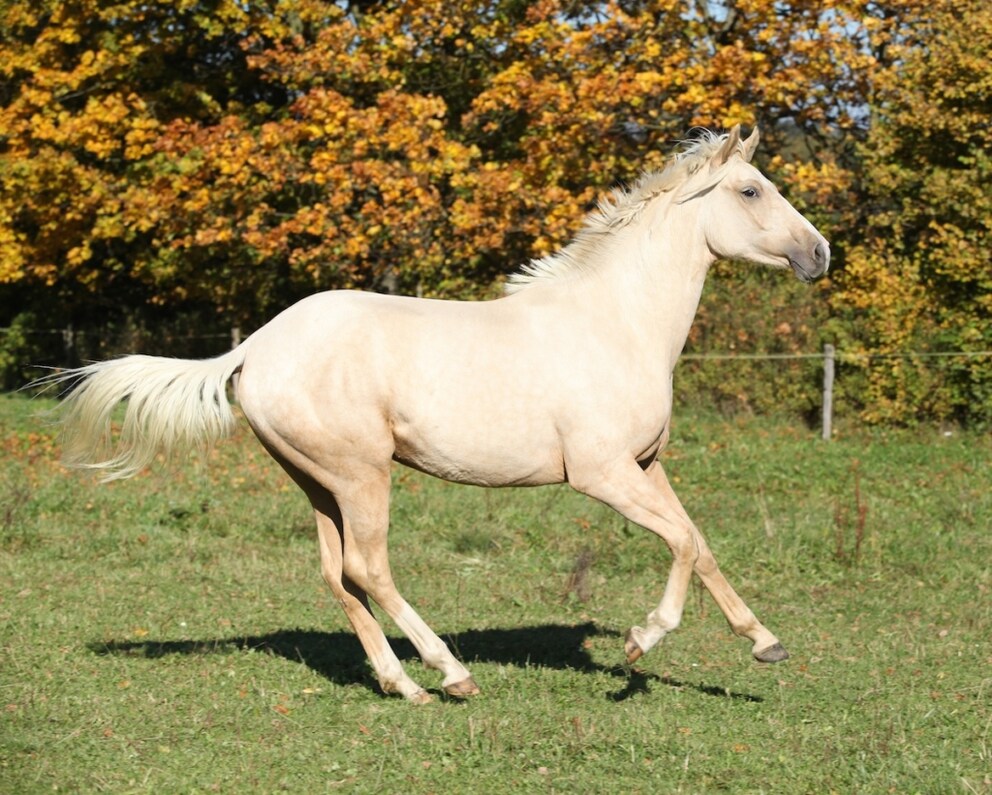June 24, 2024, 1:06 pm | Read time: 4 minutes
Every child is probably familiar with the blonde Haflinger horse or the robust Shetland pony. But among the approximately 200 horse breeds that are bred worldwide, there are some breeds that even experienced horse professionals might have never heard of. PETBOOK introduces you to five rare horse breeds.
They have a shiny golden coat, or a particularly good nature, display extreme knee action, or cost several thousand euros. PETBOOK introduces you to five rare horse breeds, some of which are critically endangered.
5 rare and endangered horse breeds
1. The Akhal-Teke
The Akhal-Teke owes its name to its original home, the Akhal oasis in Turkmenistan. This is one of the oldest horse breeds in the world. And these extraordinary animals do not only delight horse lovers with their commitment and their enormous resilience, but also because of their shimmering metallic coat. The dun glistens, especially in the sunlight, with an almost surreal golden glow.
The rare Akhal-Teke also excels in the sports world. They are used for horse racing as well as show jumping, eventing, and dressage. These noble animals have won many medals in competitions. Since 2023, the “Art of Akhal-Teke horse breeding and traditions of equestrian jewelry” have been part of UNESCO’s intangible cultural heritage.1

2. The Rottaler Horse
Only around 80 examples of the oldest Bavarian horse breed still exist. This not only makes the Rottaler horse one of the rarest horse breeds in the world, but also one of the most endangered ones. It is a medium-sized, versatile, warmblooded horse that is used for riding (carriages too) and vaulting. Because of its calm, humanly-relatable nature, the Rottaler horse is also well-suited as a therapy horse.
The breed originates from Rottal in Lower Bavaria. It has a height of approximately 165 centimeters and a brown or black coat. The Rottal horse is now considered the rarest horse breed in Europe, and dedicated breeders are working to save it2

3. The Kinsky Horse
The rare Kinsky horse comes from Bohemia, which is now the Czech Republic. Breeding was established there at the beginning of the 19th century by the aristocratic Kinsky family. After the family was expropriated in 1948, their animals were allocated to other stud farms. After that, the breeding of the Kinsky horses collapsed. Today, Kinsky horses are considered one of the rarest and most endangered horse breeds in the world.
This Czech horse breed is known for its shiny golden coat, with palomino and buckskin being the sought-after colors for breeding. In the past, these noble creatures were used as hunting horses, but today they serve as reliable partners for leisure riders and competitive athletes. If you want to buy a rare Kinsky horse, you have to dig deep: a trained animal costs around 15,000 Euros.3

4. The Hackney
In the past, English Hackneys were mainly representative carriage horses that impressed with their high knee action when being used as a horse and buggy. But with the beginnings of the railroads in Great Britain, the 147 to 168 centimeter-tall, hard-working trotters lost their most important task. And so Hackney horses became increasingly rare. Today, there are said to be 31 mares and 12 stallions left in the United Kingdom, making it one of the rare horse breeds.4

How long do horses live?

Sussex Spaniel: Why the Nearly Forgotten Hunting Dog Is a Rare Find for Families

This is how much animal suffering England’s royal traditions cause
5. The Canadian Horse
The Canadian Horse, also known as the Cheval Canadien, is Canada’s national horse. The breed developed from horses that were shipped from France to Canada in the mid-17th century. However, the population of this breed declined significantly during the American Civil War and the Second World War. The small, well-proportioned show, work, and family horse is now on the American Livestock Breeds Conservancy’s list of endangered breeds, making it a rare breed.
Editor’s note: Unfortunately, we did not have usable photo material for every horse breed. If you would like to provide the PETBOOK editorial team with images of the horse breeds mentioned in the article free of charge, please write to us at redaktion@petbook.de.

